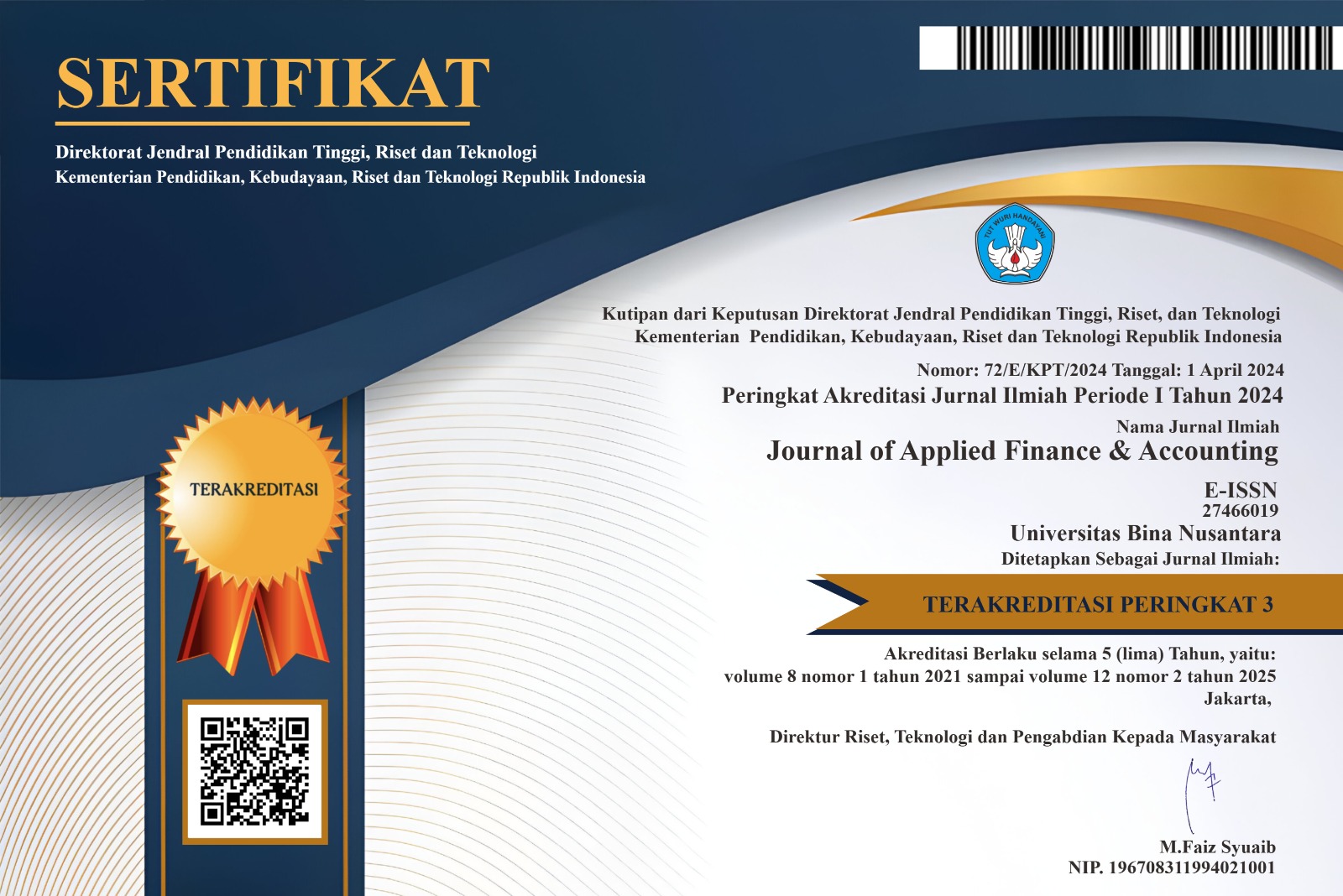VALUE-AT-RISK (VaR) FOR LQ – 45 COMPANIES
DOI:
https://doi.org/10.21512/jafa.v3i2.165Keywords:
Value-at-Risk (VaR), Historical Method, Analytical Method, LQ-45.Abstract
This paper offers a new measurement of risk, Value-at-Risk (VaR) for LQ-45 index in Indonesian Stock Exchange (ISX). Basic finance uses standard deviation in measuring and quantifying the risks. This paper uses VaR as a risk measure by using historical and analytical methods. This study uses the data containing all LQ-45 weekly data from January 1st, 2005 to December, 31st 2010. Moreover, this paper also calculates VaR of three indices (IHSG, Dow Jones, and S&P 500) for benchmarking purpose. This study finds that LQ-45 companies have VaR ranging from -5.30 to -41.05 percent with 95 percent level of confidence. It means that we can expect to suffer a minimum weekly loss between 5.30 to 41.05 percent in 5 percent probability when we invest in the LQ-45 companies stocks individually. Furthermore, this study finds that individual LQ-45 stock is riskier than indices based on VaR measure. This paper also concludes that individual LQ-45 stock tends not to follow normal distribution while index tends to follow by comparing their historical and analytical VaR calculation.
Downloads
Published
Issue
Section
License
Authors who publish with this journal agree to the following terms:
Authors retain copyright and grant the journal right of first publication with the work simultaneously licensed under a Creative Commons Attribution License that allows others to share the work with an acknowledgement of the work's authorship and initial publication in this journal.
Authors are able to enter into separate, additional contractual arrangements for the non-exclusive distribution of the journal's published version of the work (e.g., post it to an institutional repository or publish it in a book), with an acknowledgement of its initial publication in this journal.
Authors are permitted and encouraged to post their work online (e.g., in institutional repositories or on their website) prior to and during the submission process, as it can lead to productive exchanges, as well as earlier and greater citation of published work (See The Effect of Open Access).




